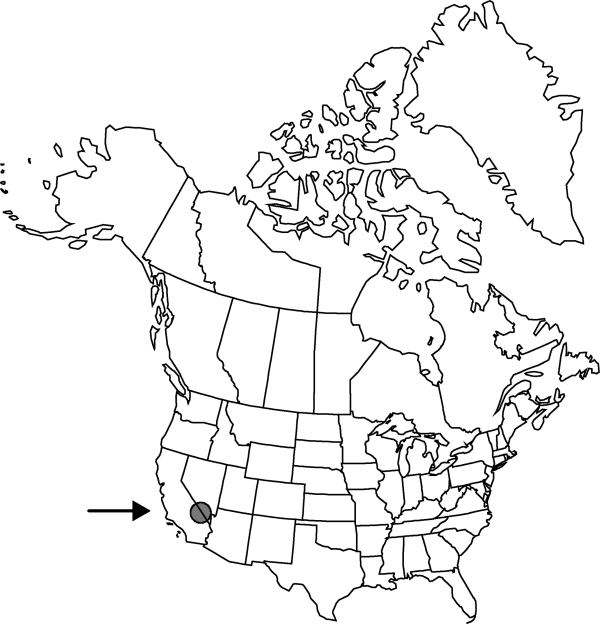Difference between revisions of "Abronia nana var. covillei"
Man. S. Calif. Bot., 598. 1935.
Endemic
Basionym: Abronia covillei Heimerl Smithsonian Misc. Collect. 52: 197. 1909
Treatment appears in FNA Volume 4. Treatment on page 69.
FNA>Volume Importer |
imported>Volume Importer |
||
| (7 intermediate revisions by 2 users not shown) | |||
| Line 7: | Line 7: | ||
|year=1935 | |year=1935 | ||
}} | }} | ||
| − | |basionyms={{Treatment/ID/ | + | |special_status={{Treatment/ID/Special_status |
| + | |code=E | ||
| + | |label=Endemic | ||
| + | }} | ||
| + | |basionyms={{Treatment/ID/Basionym | ||
|name=Abronia covillei | |name=Abronia covillei | ||
|authority=Heimerl | |authority=Heimerl | ||
| + | |rank=species | ||
| + | |publication_title=Smithsonian Misc. Collect. | ||
| + | |publication_place=52: 197. 1909 | ||
}} | }} | ||
|synonyms= | |synonyms= | ||
| Line 19: | Line 26: | ||
}}<!-- | }}<!-- | ||
| − | --><span class="statement" id="st- | + | --><span class="statement" id="st-undefined" data-properties=""><b>Leaf </b>blades shortly ovate to oblong-ovate. <b>Inflorescences</b>: bracts lanceolate.</span><!-- |
-->{{Treatment/Body | -->{{Treatment/Body | ||
| + | |phenology=Flowering spring–fall. | ||
|habitat=Dry sandy and rocky areas, pinyon-juniper woodlands, yellow-pine forests | |habitat=Dry sandy and rocky areas, pinyon-juniper woodlands, yellow-pine forests | ||
|elevation=1600-3500 m | |elevation=1600-3500 m | ||
| Line 33: | Line 41: | ||
-->{{#Taxon: | -->{{#Taxon: | ||
name=Abronia nana var. covillei | name=Abronia nana var. covillei | ||
| − | |||
|authority=(Heimerl) Munz | |authority=(Heimerl) Munz | ||
|rank=variety | |rank=variety | ||
| Line 40: | Line 47: | ||
|basionyms=Abronia covillei | |basionyms=Abronia covillei | ||
|family=Nyctaginaceae | |family=Nyctaginaceae | ||
| + | |phenology=Flowering spring–fall. | ||
|habitat=Dry sandy and rocky areas, pinyon-juniper woodlands, yellow-pine forests | |habitat=Dry sandy and rocky areas, pinyon-juniper woodlands, yellow-pine forests | ||
|elevation=1600-3500 m | |elevation=1600-3500 m | ||
| Line 46: | Line 54: | ||
|publication title=Man. S. Calif. Bot., | |publication title=Man. S. Calif. Bot., | ||
|publication year=1935 | |publication year=1935 | ||
| − | |special status= | + | |special status=Endemic |
| − | |source xml=https:// | + | |source xml=https://bitbucket.org/aafc-mbb/fna-data-curation/src/2e0870ddd59836b60bcf96646a41e87ea5a5943a/coarse_grained_fna_xml/V4/V4_142.xml |
|genus=Abronia | |genus=Abronia | ||
|species=Abronia nana | |species=Abronia nana | ||
|variety=Abronia nana var. covillei | |variety=Abronia nana var. covillei | ||
| − | |||
| − | |||
}}<!-- | }}<!-- | ||
-->[[Category:Treatment]][[Category:Abronia nana]] | -->[[Category:Treatment]][[Category:Abronia nana]] | ||
Latest revision as of 21:56, 5 November 2020
Leaf blades shortly ovate to oblong-ovate. Inflorescences: bracts lanceolate.
Phenology: Flowering spring–fall.
Habitat: Dry sandy and rocky areas, pinyon-juniper woodlands, yellow-pine forests
Elevation: 1600-3500 m
Discussion
Selected References
None.
Lower Taxa
None.
